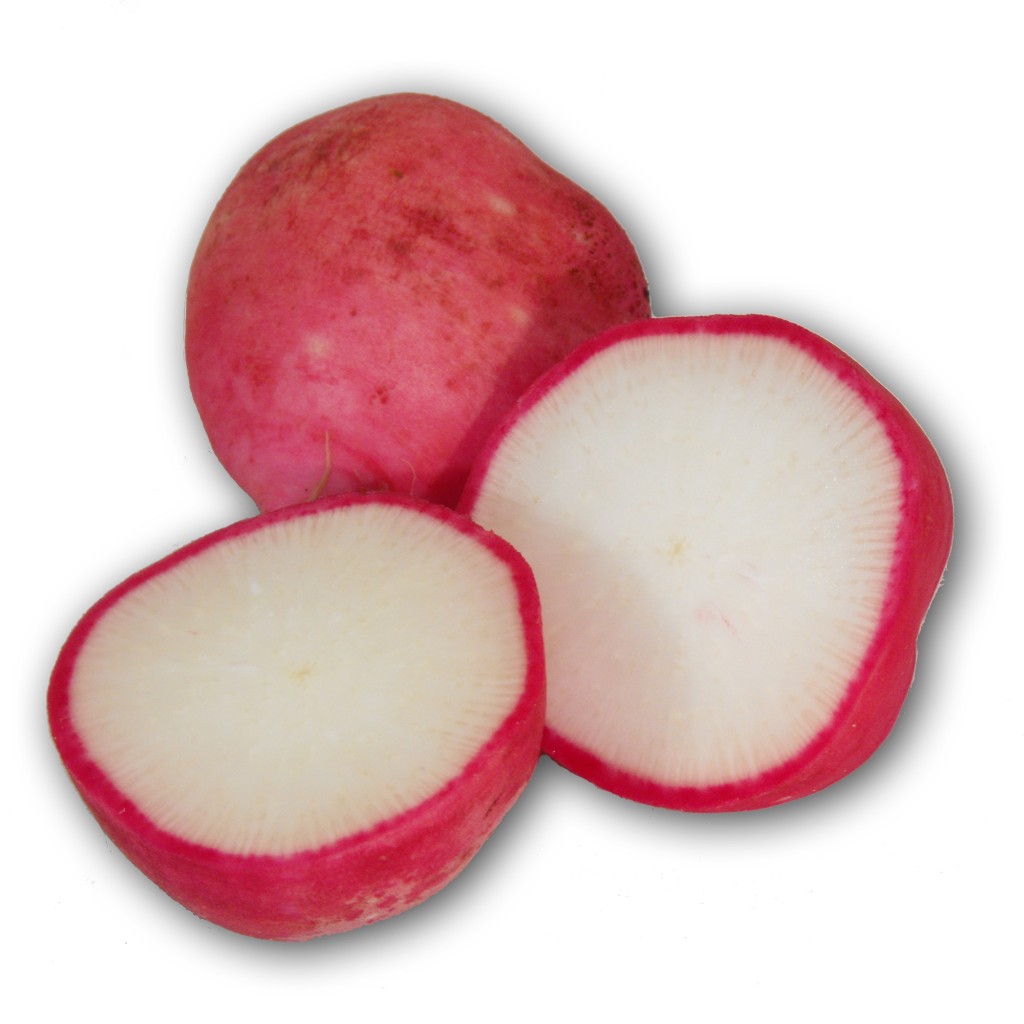Radish Seeds
Useful gardening information
Winter radishes are sown in midsummer to late summer, much as fall turnips. They are slower to develop than spring radishes; and they grow considerably larger, remain crisp longer, are usually more pungent and hold in the ground or store longer than spring varieties.
Informative articles found on the web:
Radish Recipes





These whoppers are known for reaching baseball size; however, at any size, they remain sweet, tender, and free from cracks. These giant red radishes take about 30 days to grow to full size but can be harvested earlier when they are smaller as well.

Though the exact origin of French Breakfast radishes is unknown, renowned seed expert James J. H. Gregory of Marblehead, Massachusetts first offered them for sale in his seed catalog in 1875.
They did indeed originate in France. These radishes make great natural snacks for the table. Keep a bowl of them in the fridge for a quick snack. The shape also makes them great for dipping.
The tops can be used to create a spicy salad. You might try slicing both roots and leaves for a stir-fry, or sauteeing them in butter.
Topped with edible, leafy greens, French Breakfast radishes are very crisp and offer a mildly spicy flavor. Grilling or oven roasting will bring out the subtly sweet and nutty flavor of the French Breakfast radish.

The flavor is sharp and tear-inducing for lovers of spice. Wasabi radish seeds also make excellent micro-greens, with the spiciness developing early on in its tiny leaves.

A winter variety valued for its strong medicinal properties, ease of growth, and long storage.Fine, fairly hot flavor, good raw or cooked. 50 days.

Deer eat both the green top and the radish itself. Daikon Radish is also used in soil improvements as well as cover crop. Daikon Radish is very aggressive and will germinate and thrive in most soils types around the world. Great for no till food plots!
One of the biggest benefits behind Daikon Radish is its potential as a source of forage for both deer and cattle. Because the Daikon Radish is so hardy, it can thrive in almost climate and will continue to thrive even as Winter temperatures set in. This makes Daikon Radish a popular form of cattle forage during the Winter months as well. During the Summer, it's just as popular a source of forage because of its aggressive growing tendencies, and how quickly it sprouts new leaves after being consumed.
Daikon Radish have been a popular as a form of sustenance for residents of Southeast Asia for thousands of years. Thanks to its mild taste, it has found new audiences across the world in more recent years. Daikon Radishes can be stored for weeks, even without their leaves, if they are stored in a cool place. In Japanese cuisine, they are often pickled. Obviously the large root leaves behind a significant cavity in the soil, making it an optimal option for breaking up soil, including heavy clays, for those who wish to plant new crop options in years to come. Studies have shown that this taproot leaves more than 6 to 10 inches of effect on soil compaction. The word "Daikon" actually translates to "big root" in Japanese!
Cooking with Daikon Radish: Noodles: Try shredding daikon into "noodles" and adding to soups, stir-fries, or as the base for pasta sauce. Use a vegetable peeler to shave the long root into thin strips, then quickly cook into stir-fries, etc.
Salad: Peel, then grate, julienne, dice, or slice to add crunch to your favorite salad. Many like to sprinkle mine with Ume Plum Vinegar when using raw.
Stew: A somewhat traditional option, try adding big chunks of dakion radish to hearty stews. Try a Beef Stew with Red Wine & Herbs or Beet Bourguignon.
Roasted Like any root vegetable, daikon is great roasted. Use a basic recipe, then branch out to Miso Maple Roasted Vegetables.
Slow cooked baking pan or slow cooker with carrots, onions, garlic, low-sodium seasonings, low-sodium vegetable broth, lean meat. Turn on low and let the juices and flavors start mixing for an all-in-one meal.
Health benefits: Boosting digestive health. Assists in detoxification — As a diuretic, daikon may help stimulate urination. Weight management — Daikon is a low-calorie and low-cholesterol vegetable, yet still high in fiber

